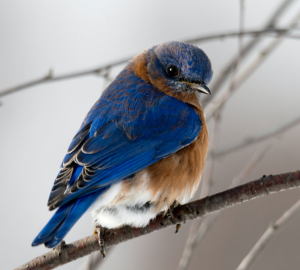 Fixed Deparutre Trek List 2023
Fixed Deparutre Trek List 2023

Document should be submitted before trekking.
Medical Certificate should be submitted during trekking.
Documents should needed of Foreigner -
1. Passport Details
2. Visa Details
3. Passport size Photo
Documents for Indian -
1. Any valid Identification Certificate
2. Passport size Photo
Bird watching places in Sikkim, Darjeeling, Kalimpong

Discover the Birds Paradise: An Ultimate Guide to Bird Watching in Sikkim, Darjeeling, and Kalimpong
Discover the hidden gems of the Himalayan foothills as you travel through Sikkim, Darjeeling, and Kalimpong on a fascinating tour. These areas, which are tucked away among breathtaking peaks and lush vegetation, provide a special fusion of cultural diversity and wildlife, making them a haven for bird watchers.
Sikkim, a treasure in India's northeast, is a refuge for people who love birds. Numerous migratory and resident birds can find a nourishing habitat in its different biological zones, which range from subtropical to alpine forests. West Sikkim provides an unmatched opportunity for bird viewing thanks to its idyllic surroundings including Kanchenjunga National Park, Yuksom, and Rabdentse Ruins Bird Sanctuary. Khechoperi Lake's peace and the untainted beauty.
South Sikkim is also a haven for avian wonders. Bird enthusiasts will love the panoramic views from Menam Hill, the quiet environs of Kewzing, and the rich birdlife at Tendong Hill and Kitam. Panggthang in East Sikkim and the unspoiled wildness of North Sikkim are also home to a diverse range of bird species.
Moving west, the 'Queen of Hills,' Darjeeling, provides more than just world-renowned tea. Its diverse avifauna, particularly in Singalila National Park and the renowned Tiger Hill, is a sight to behold. The early morning chorus of birds at Tiger Hill, along with a breathtaking sunrise, is an unforgettable experience.
Kalimpong, another diamond in North-East India's crown, is a birdwatcher's paradise. The tranquil Samathar and the lush foliage of Lava give an ideal setting for observing a large diversity of birds. The Neora Valley National Park, with its diverse wildlife, is a must-see. Don't miss the Lava Highway, where the song of birds will accompany you on your journey.
Feathered Wonders: Unraveling the Birdlife of Sikkim, Darjeeling, and Kalimpong
The regions of Sikkim, Darjeeling, and Kalimpong are known for more than simply their magnificent landscapes and cultural diversity. They are also home to a variety of bird species, each with their own distinct charm and fascination.
Kanchenjunga National Park, located in the heart of Sikkim, is a haven for rare and endangered birds. The brilliant Fire-tailed Myzornis, the secretive Snow Pigeon, and the stately Himalayan Griffon can all be found here. The calm Khechoperi Lake is noted for its Black-necked Crane population, a sight that will fascinate any bird lover.
Menam Hill in South Sikkim is a birder's dream, home to the Himalayan Bulbul, Blue Whistling Thrush, and the uncommon Satyr Tragopan. Kewzing's tranquil environs are home to the brilliant Green-tailed Sunbird and the singing Rufous Sibia.
With over 120 kinds of birds, Darjeeling's Singalila National Park is a sanctuary for bird enthusiasts. The park is well-renowned for its rare and gorgeous Satyr Tragopan, also known as the Red Panda of the avian world. The early morning chorus of birds like the Darjeeling Woodpecker, Yellow-billed Blue Magpie, and Himalayan Bluetail at Tiger Hill is a soul-stirring symphony.
The Neora Valley National Park in Kalimpong is a veritable treasure trove of avian marvels. You can see the elusive Rufous-throated Partridge, the vivid Red-headed Trogon, and the singing White-gorgeted Flycatcher here. The Lava region is famous for its population of the rare and magnificent Rufous-necked Hornbill.
The spring and autumn migration seasons, from March to May and September to November, are ideal for bird watching in these areas. The regions are filled with a symphony of bird songs during these times, and the potential of observing uncommon and migratory birds is at its peak.
Birding in the Dooars region.
"Exploring the Feathered Wonders of Dooars: A Birdwatcher's Paradise"
The Dooars region, located in the Eastern Himalayan foothills, is a treasure trove of natural beauty and variety. Dooars is a birdwatcher's dream, with its lush forests, meandering rivers, and rich animals.
The region is home to various national parks and animal sanctuaries, each of which provides a distinct bird viewing experience. The Gorumara National Park, noted for its Indian Rhinoceros population, is also a birder's paradise. Species such as the Indian Peafowl, Scarlet Minivet, and the uncommon Brahminy Duck can be found here.
Another jewel in Dooars is the Chapramari Wildlife Sanctuary, which is home to a variety of bird species. The sanctuary's lush woodlands and water bodies attract birds such as the Green Magpie, Hill Myna, and the colorful Red Junglefowl.
The Buxa Tiger Reserve is a must-see for bird lovers due to its rich vegetation and fauna. The reserve is home to endangered species such as the Great Hornbill, Sultan Tit, and the Black-necked Crane. The White-rumped Shama's melodic calls resound across the trees, adding to the enchantment.
The Jaldapara National Park, noted for its Indian Rhinoceros and Bengal Florican populations, is also a birder's paradise. The park is home to a number of bird species, including the uncommon Crested Serpent Eagle, Bengal Florican, and Black Stork.
The winter months, from October to March, are ideal for bird watching in the Dooars. The region is filled with the lovely sounds of migratory birds during this time, and the potential of observing uncommon species is at its peak.
Finally, the Dooars region, with its rich biodiversity and tranquil settings, provides a one-of-a-kind chance for bird watching. Dooars guarantees an unforgettable experience packed with the sights and sounds of nature's winged wonders, whether you're a seasoned bird watcher or a nature enthusiast.
 Upcoming Trek Date
Upcoming Trek Date

Document should be submitted before trekking.
Medical Certificate should be submitted during trekking.
Documents should needed of Foreigner -
1. Passport Details
2. Visa Details
3. Passport size Photo
Documents for Indian -
1. Any valid Identification Certificate
2. Passport size Photo
Tip of Trek from GTA
Start your trekking training early
Choose the correct footwear for your trek
Don't forget your walking socks
Build leg strength with gym work
Build your walking training
Train on similar walking terrain
Practice using your backpack
Use walking poles

General Information
Equipement List Darjeeling-Gen-Info Ladakh Gen-Info One day or two day Hiking Sikkim general info
Fitness for Trek
Boosting your aerobic fitness
Strength Training
Staying Hydrated
Focus on optimizing sleep
Shoes
Hilly terrain

Article
Goechala Trek complete Guide and Information Explore Kalimpong Trekking in Ladakh: Exploring the Stunning Markha Valley Goechala Trek: A Guide For All The Trekkers The Ultimate Guide to Booking Your Dream Trek Online Preparing for the Ultimate Green Lake Trek: A Comprehensive Guide Sandakphu Trek: The Ultimate Guide to Exploring the Himalayas Dzongri Trek Goechala Trek: A Himalayan Adventure of a Lifetime Best Monsoon Treks in Sikkim: A Unique Rainy Season Adventure Top best tourist place and destination in Sikkim Sandakphu Trek – A Complete Trekking Guide Sikkim General Information Best Time to Visit Sandakphu: Seasonal Trekking Tips AMS Table Some of the Adventure Camps Tours that we organize. A Guide to Hiking to Dzongri Trek Peak in Sikkim Bird watching in Sikkim region-discover the place Bird watching places in Sikkim, Darjeeling, Kalimpong Crucial information to understand regarding Acute Mountain Sickness
North East Package Tour
Sikkim Darjeeling Package Tour 7 Night 8 Days Sikkim Darjeeling Tour 7 Night 8 Days Exclusive Sikkim Darjeeling sikkim darjeeling tour Best Sikkim Darjeeling Sikkim Package Tour
 Glacier Trek & Adventure™
Glacier Trek & Adventure™